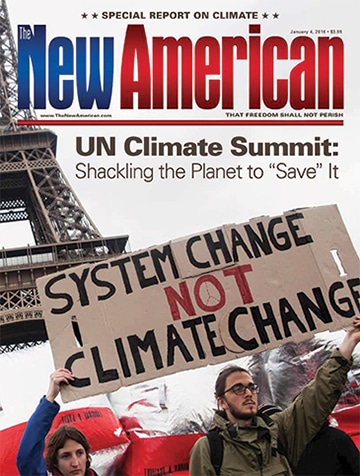Shedding Light on the Global Green Agenda
As I sit in my office, three lights now burn where one used to suffice. When I walk into the room and flip the ceiling light switch, the odd, coiled compact fluorescent lamp (CFL), now the only option on the light bulb aisle of the supermarket, flickers dimly and puts out a weak gray light for several minutes before finally flaring into full luminescence. Despite its size, it’s about as bright as an old 30-Watt bulb — not enough light to work by. Fortunately, I have a lamp on my desk and a floor lamp beside my chair, both also equipped with CFLs. Together, these three lights give a reasonable approximation of a single old-fashioned 60-Watt incandescent light bulb. Today, incandescent light bulbs, one of America’s greatest inventions, are all but gone, driven out of production by a 2007 law (the Energy Independence and Security Act) that requires all light bulbs to meet energy efficiency standards largely unobtainable by incandescent light-bulb technology.
As to functionality, there is no comparison between new and old. Incandescent bulbs were easier on the eyes, brighter, and lit instantly when the switch was flicked. Also, they were cheap. A box of 10 cost only a few dollars, and lasted for many months. At the time the new efficiency standards went into effect, the only bulbs able to meet them were CFLs, which, by contrast, are dim, flickering, and take time to light up, as is true of all fluorescent lights. They are said to last many times longer than incandescent bulbs, but they’re also much more expensive; individual CFLs can run 10 or 20 dollars apiece or more. Several of the CFLs in my home were supplied for free by the electric company, anxious to promote the new, allegedly environmentally friendly technology. But that was a one-time offer; before long, the purchase of the expensive new lights will become yet another burdensome, government-imposed budget item. Working in an office scarcely brighter than if lit by oil lamps, the consequences of what has been called “light bulb socialism” are all too clear. And while LED lights, which also meet the government’s requirements, are becoming popular as they are brighter than fluorescents and newer models are better able to approximate an incandescent light bulb’s spectrum, they are still quite expensive. The ban on incandescent light bulbs is a completely unnecessary step backwards, courtesy of a federal government that seems determined to turn the clocks back to the pre-industrial age.
But the odd thing about “light bulb socialism” is that it is happening all over the world, and at the same time. Australia banned the sale of “wasteful” incandescent light bulbs in 2009, and Argentina did the same the following year. Canada banned the sale of incandescent bulbs in 2014. The European Union banned the sale of most incandescent bulbs in 2012, and many Asian countries, including India, China, and the Philippines, have pledged to do the same. The phase-out of incandescent bulbs is an accelerating global phenomenon, a fact that most American critics of the 2007 law have failed to mention.
JBS Member?
Sign in with your ShopJBS.org account.
 Subscribe Now
Subscribe Now
- 12 Issues Per Year
- Digital Edition Access
- Digital Insider Report
- Exclusive Subscriber Content
- Audio provided for all articles
- Unlimited access to past issues
- Cancel anytime.
- Renews automatically
 Subscribe Now
Subscribe Now
- 12 Issues Per Year
- Print edition delivery (USA)
*Available Outside USA - Digital Edition Access
- Digital Insider Report
- Exclusive Subscriber Content
- Audio provided for all articles
- Unlimited access to past issues
- Cancel anytime.
- Renews automatically


